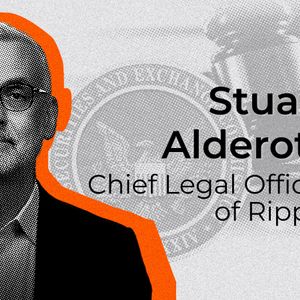BitcoinWorld Urgent: Bitcoin PoW Security Under Threat as Fees Plummet to 13-Year Low Hey crypto enthusiasts! Have you been keeping an eye on Bitcoin lately? While the price often grabs headlines, there’s a quiet but potentially significant development brewing beneath the surface: Bitcoin’s transaction fees have fallen to levels not seen in over a decade. This isn’t just about cheaper transactions; it’s sparking a serious debate about the long-term sustainability and security of the network’s core engine – its Proof-of-Work (PoW) model. Understanding Bitcoin PoW and Miner Revenue Before diving into the concerns, let’s quickly recap how Bitcoin PoW works. At its heart, Bitcoin relies on a decentralized network of miners who use massive amounts of computing power (hash rate) to solve complex mathematical problems. The first miner to solve the problem gets to add the next block of transactions to the blockchain and is rewarded in two ways: The Block Reward: A fixed amount of new BTC created with each block. This amount halves approximately every four years (the ‘halving’ event). Transaction Fees: Collected from users who include a small fee with their transactions to incentivize miners to prioritize and include them in blocks. This combination of block rewards and miner revenue is crucial. It pays for the electricity and hardware costs of mining, and more importantly, it incentivizes miners to secure the network by making it economically unfeasible for any single entity to gain control of the majority of the hash rate (a 51% attack). The Alarming Drop in Bitcoin Fees Recently, the contribution of Bitcoin fees to total miner revenue has plummeted. Data shows that transaction fees are now making up only about 1% of the total revenue earned by miners. To put this into perspective, this is the lowest percentage seen in 13 years, a period during which Bitcoin has undergone multiple halvings, significantly reducing the block reward. Why are fees so low right now? Several factors could be contributing: Reduced Network Congestion: Following periods of high activity (like the Ordinals craze), demand for block space has decreased. Increased Efficiency: Adoption of technologies like SegWit and batching transactions can make block space usage more efficient. Growth of Layer 2 Solutions: More transactions are potentially happening off the main chain on layers like the Lightning Network, reducing demand for base layer block space. While cheaper transactions might sound great for users, the dramatic drop in fees is raising eyebrows among researchers and experts concerned about the network’s long-term security guarantees. Is Bitcoin Security At Risk? The 51% Attack Concern This is where the core concern about Bitcoin security comes into play. The security of the PoW network is directly tied to the amount of hash rate dedicated to it. Miners provide this hash rate because they are incentivized by revenue. If the block reward continues to halve over time (eventually reaching zero) and transaction fees don’t rise significantly to compensate, the total miner revenue could become insufficient to support the massive amount of hash rate needed to make a 51% attack prohibitively expensive. An entity controlling more than 50% of the network’s total hash rate could potentially: Prevent new transactions from gaining confirmations. Reverse transactions they have sent while still retaining the funds (double-spending). Prevent other miners from finding blocks. Ethereum researcher Justin Drake recently highlighted this risk on X, estimating that a 51% attack on Bitcoin could potentially be executed with as little as $20 billion in hardware. While $20 billion is a huge sum, he contrasts this with Bitcoin’s potential future market capitalization, which some speculate could reach $200 trillion or more. In that context, a $20 billion attack cost looks like a mere fraction, raising serious questions about the proportionality of security cost to network value in the distant future. The Role of Miner Revenue Sustainability The sustainability of miner revenue is the linchpin. As the block reward diminishes with each halving, transaction fees are expected by many in the Bitcoin community to gradually become the dominant, and eventually the sole, source of miner income. The current situation, where fees are at a 13-year low despite recent halvings, challenges this long-held assumption. Some argue that the current low fee environment is temporary and that future adoption, increased usage, or new use cases (like Ordinals again) will naturally drive fees higher over time. They point to historical periods where fees spiked significantly during times of high network congestion. However, others are less optimistic, suggesting that without a structural change, the long-term decline in the block reward coupled with potentially insufficient fee growth could lead to a gradual decrease in hash rate, making the network less secure over decades. Potential Structural Reforms and Debates The discussion around low fees inevitably leads to debates about potential structural changes to Bitcoin, though these are highly controversial within the community: Increasing Fee Growth: The most organic solution, relying on increased demand for block space. Can Bitcoin’s base layer transaction volume grow enough to support security? Introducing Tail Issuance: This would mean changing Bitcoin’s hard cap of 21 million coins and introducing a small, perpetual block reward after all 21 million BTC are mined. This is seen as heresy by many Bitcoin maximalists who view the fixed supply as a core, unchangeable feature. Transitioning to Proof-of-Stake (PoS): Moving away from energy-intensive mining to a system where security relies on validators staking their coins, similar to Ethereum 2.0. This is arguably even more controversial than tail issuance, as it would fundamentally alter Bitcoin’s security model and distribution mechanism, which are considered sacrosanct by many. Currently, there is no significant movement or consensus within the core Bitcoin development community to implement radical changes like tail issuance or PoS. The prevailing belief is that the fee market will eventually mature and provide sufficient security. Broader Implications for the Crypto Ecosystem Why should the broader crypto ecosystem care about Bitcoin security ? As the largest and most established cryptocurrency, Bitcoin’s stability and security are foundational to the entire market. A successful 51% attack on Bitcoin, however unlikely it may seem today, would send shockwaves through every corner of the crypto world, severely damaging confidence and potentially leading to widespread panic and regulatory backlash. Experts warn that systemic risks to Bitcoin could have cascading effects, impacting altcoins, stablecoins, decentralized finance (DeFi), and institutional adoption. Therefore, the health and security of the Bitcoin network are of paramount importance to everyone involved in the crypto space. What Does This Mean for You? As an investor or enthusiast, understanding this debate is crucial. It highlights that even established technologies like Bitcoin face long-term challenges that require ongoing discussion and potential future solutions. While a 51% attack isn’t an imminent threat given the current hash rate and attack cost, the trend of declining fee contribution relative to the block reward is a data point worth monitoring. Keep an eye on: Transaction Fee Trends: Are fees recovering or continuing to lag? Hash Rate Levels: Is the network’s total computing power remaining high? Community Discussions: Are debates around fee mechanisms, tail issuance, or other potential changes gaining traction? Technological Developments: How are Layer 2 solutions and other scaling technologies impacting base layer fee pressure? Compelling Summary Bitcoin’s transaction fees hitting a 13-year low is more than just a statistic; it’s a signal prompting critical examination of the network’s long-term security model. While the Bitcoin PoW mechanism has proven incredibly robust, its reliance on ever-decreasing block rewards means that future security will increasingly depend on sufficient miner revenue from transaction fees. The current low fee environment, contributing just 1% to miner income, raises valid questions about whether the fee market alone can sustainably secure the network against potential 51% attack vectors in the distant future, especially as the network’s value potentially grows exponentially. While radical changes like tail issuance or PoS remain highly controversial and unlikely in the short term, the ongoing debate underscores the dynamic nature of blockchain technology and the importance of ensuring robust Bitcoin security for the health of the entire crypto ecosystem. It’s a challenge the community must continue to address as Bitcoin evolves. To learn more about the latest Bitcoin trends, explore our article on key developments shaping Bitcoin price action. This post Urgent: Bitcoin PoW Security Under Threat as Fees Plummet to 13-Year Low first appeared on BitcoinWorld and is written by Editorial Team



















